This National Tree Week, we thought we’d take time to share what AOC Archaeology have recently uncovered about Iron Age woodworking.
We’ve been excavating an astonishingly well-preserved Iron Age settlement at the Black Loch of Myrton in Wigtownshire (with the help of HES funding).
The settlement was built on a peaty island on the edge of a shallow loch. Thanks to these waterlogged conditions, much of the wood used in the buildings has survived.
Ancient oak
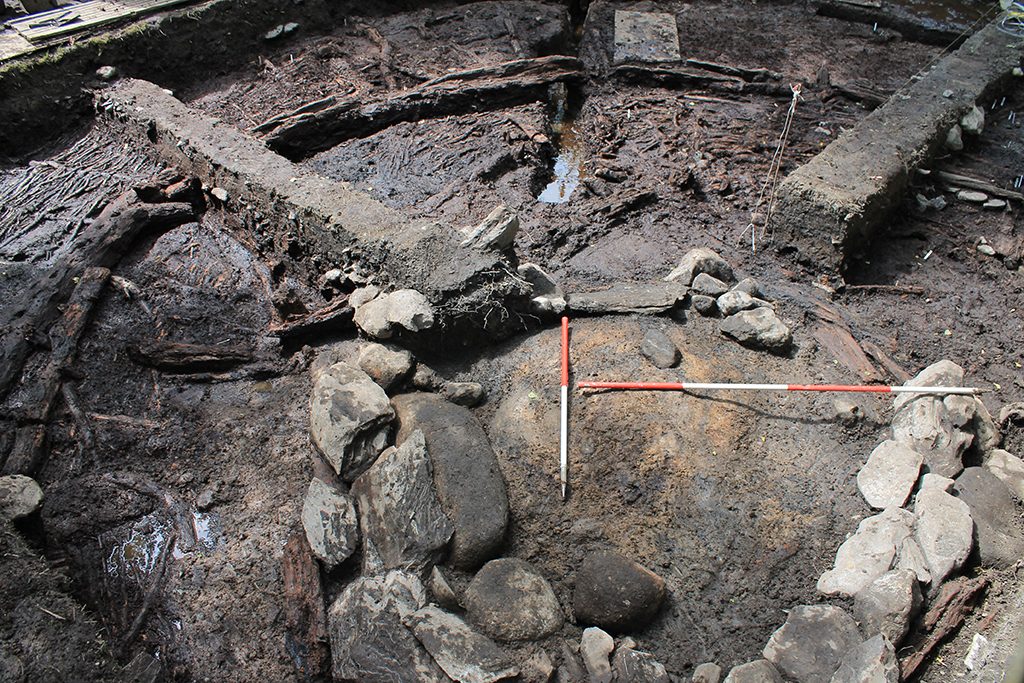
Roundhouse 2 with central hearth in foreground
During the excavation, we were awed by the size and construction of Roundhouse 2. This is the best-preserved of the buildings, and we believe it was designed to impress its Iron Age visitors.
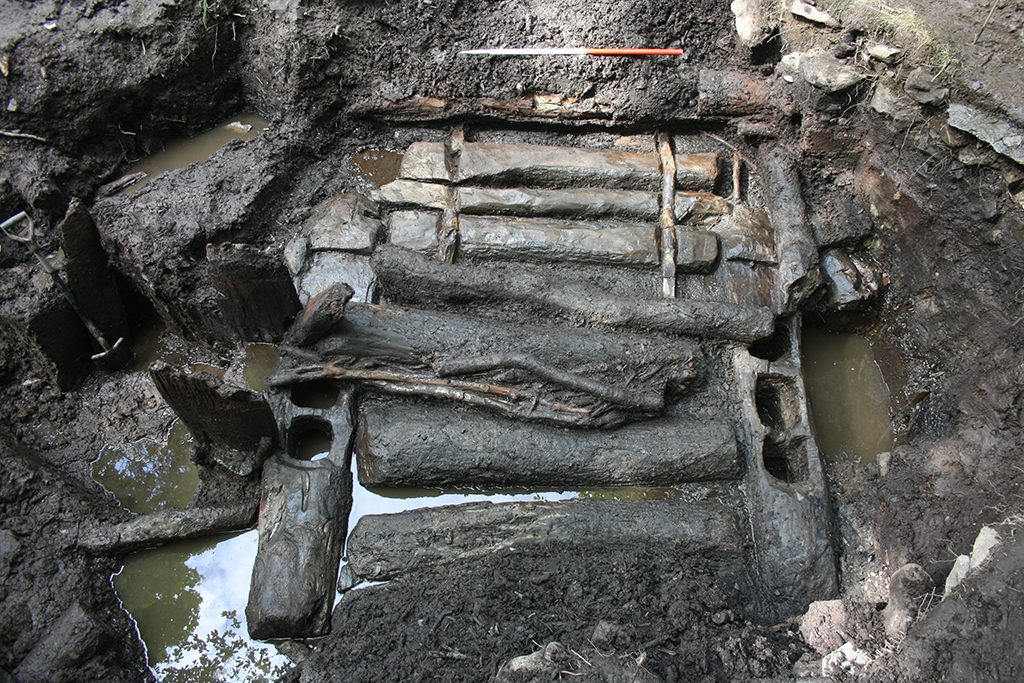
The entrance into the roundhouse – some of the oak planks are still in place to the left
It is nearly 13 m in diameter and has a wide, carefully-built entrance flanked by a façade of vertical oak planks. For the façade, the builders selected massive oak trunks which they then split across into 3 or 4 thick planks. These oaks were from trees nearly 400 years of age and over 1 m in diameter – giants of an ancient forest.
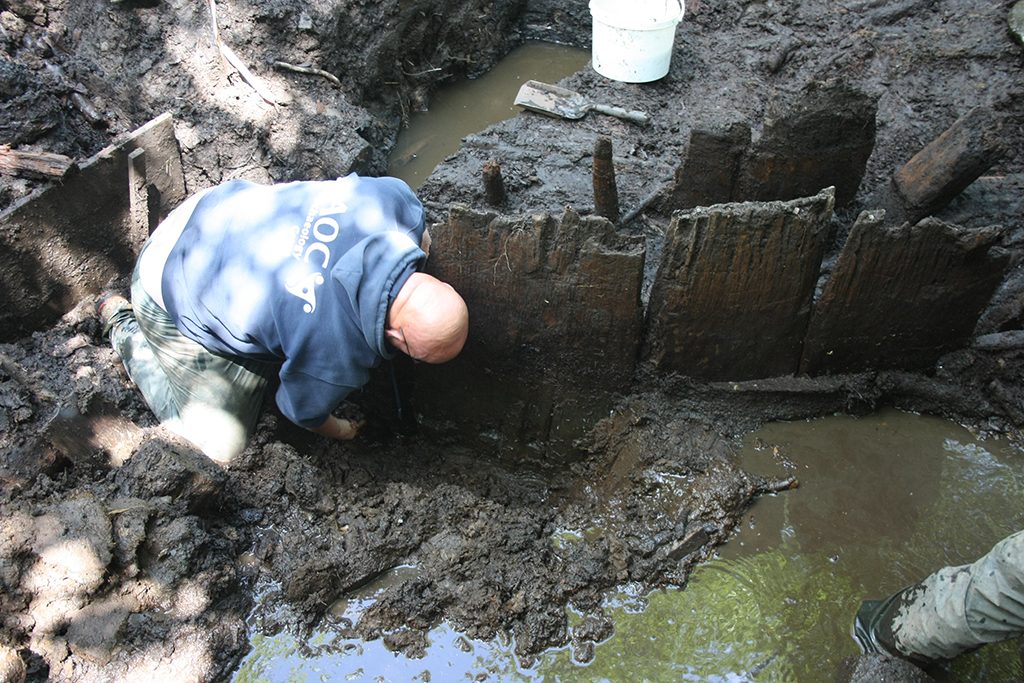
The oak plank façade in situ
The builders had only small axes to fell and shape these massive trees, so building the entrance represented a major investment of their time and energy. We think that, by displaying the oak planks around the entrance, the builders were aiming to impress any visitor with their wealth and power.
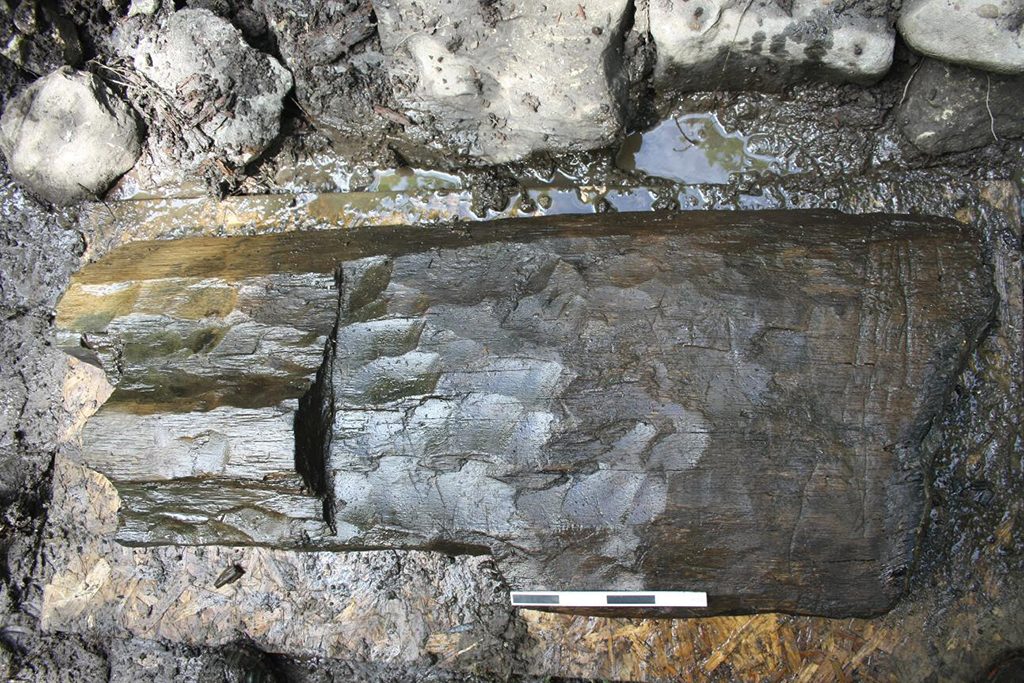
One of the oak planks – the marks made by the axe are visible
Coppiced wood
The builders were very selective about what species and size of wood they used in different parts of the roundhouse. Inside, slender posts of oak encircled the central hearth and supported the roof. These came from a much younger woodland than the oak planks.

One of the wickerwork mats on the floor of the roundhouse
They used small stakes of hazel, birch, ash and alder, woven around with hazel rods to construct an outer wall of wickerwork. The floor was covered with wickerwork mats, also made with hazel and alder rods. This is the type of small wood that would have come from a coppiced woodland.
Alder
But the wood species that the builders used mostly was alder. This is a tree that likes wet places and grows around lochs and streams, so it would have been easy to find. They used big alder logs for the floors, for the entrance, and to build the trackway running by the house. Many of the logs displayed a hole at one end, cut through from one side of the log to the other. We think these were tow-holes – a rope was threaded through the hole and used to tow the logs.
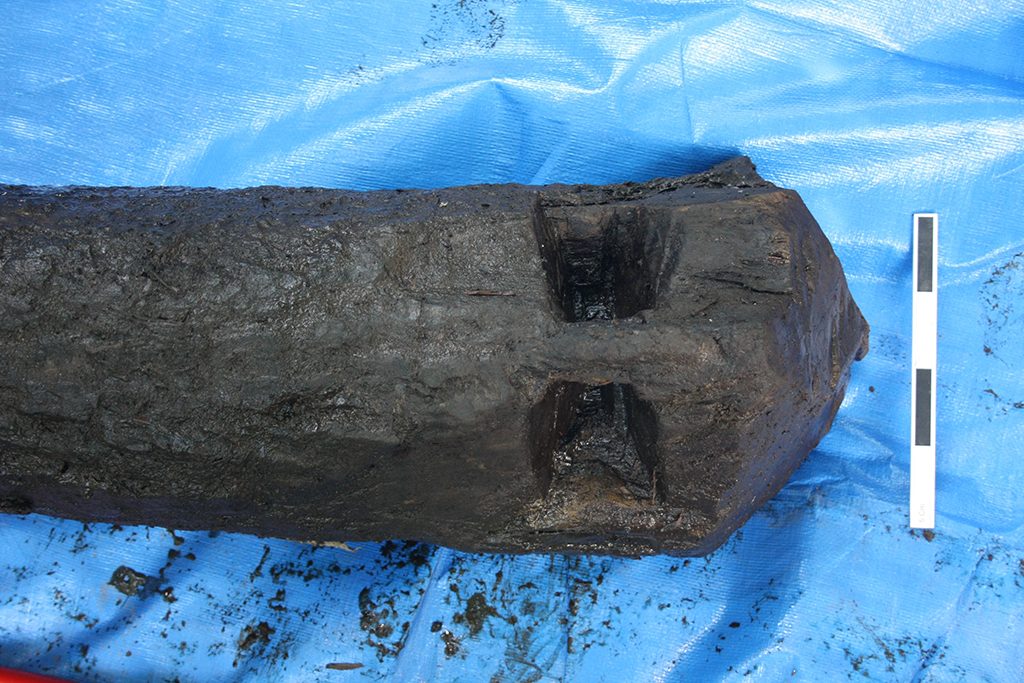
A tow-hole through an alder log
The woodworking toolkit
Apart from the oak planks the builders didn’t shape the wood very much. Mostly they used roundwood and they didn’t even trim the bark off. We have not found any of the woodworking tools they would have used. Iron was very valuable, so they probably took their toolkit with them when they abandoned the house.
But we do find proxy evidence of the tools they used, in the toolmarks left on the wood. At Black Loch we have evidence of a range of small axes, small gouges and chisels.
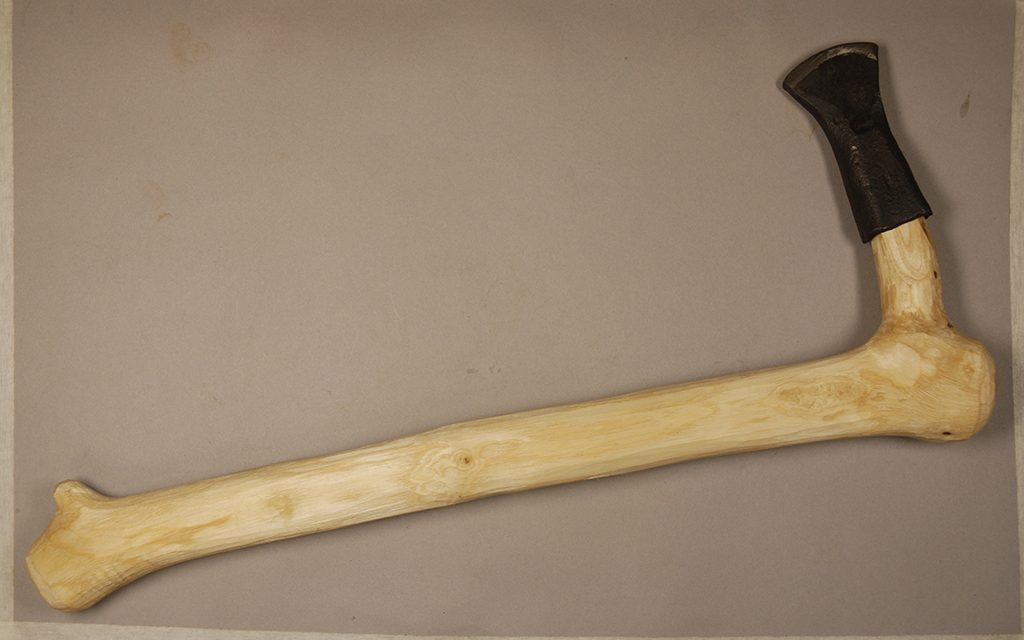
A replica of one of the axes used at Black Loch
A replica roundhouse
Using the plan of the roundhouse and what we have discovered about the types of wood that the builders used, our partners at the Whithorn Trust have built a stunning reconstruction which is now open to the public. It is only when you are inside that you realise how open and spacious these roundhouses were – go visit and be impressed by the woodworking skills of the Iron Age builders!
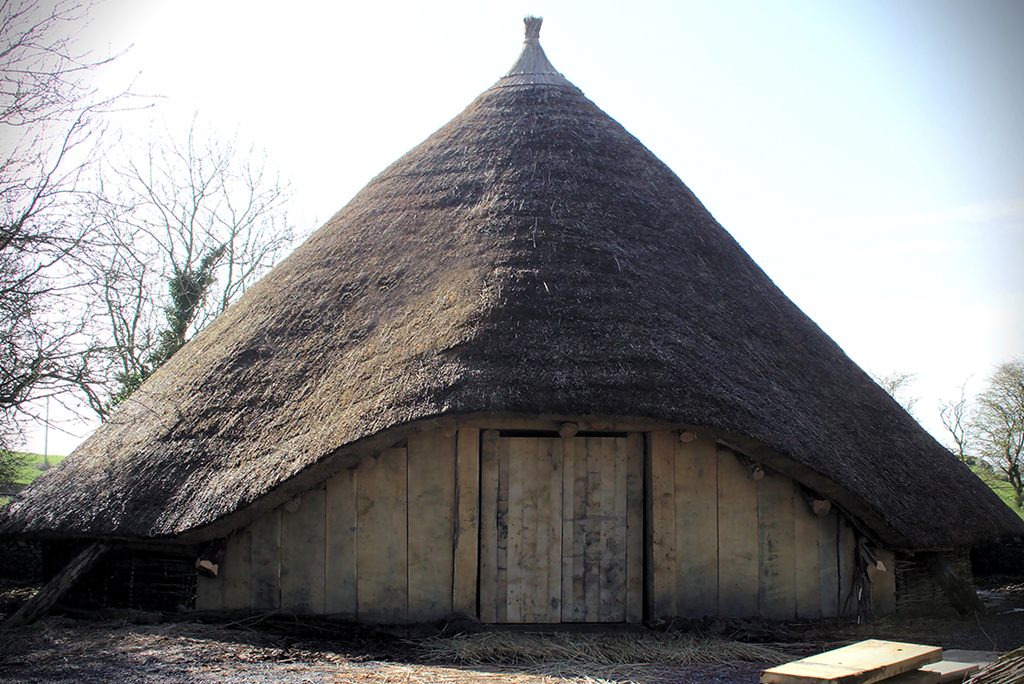
The reconstruction of the roundhouse at Whithorn
You can find out more about visiting the Whithorn roundhouse by contacting Whithorn Timescape (open Easter-October). Details are available on their website.

